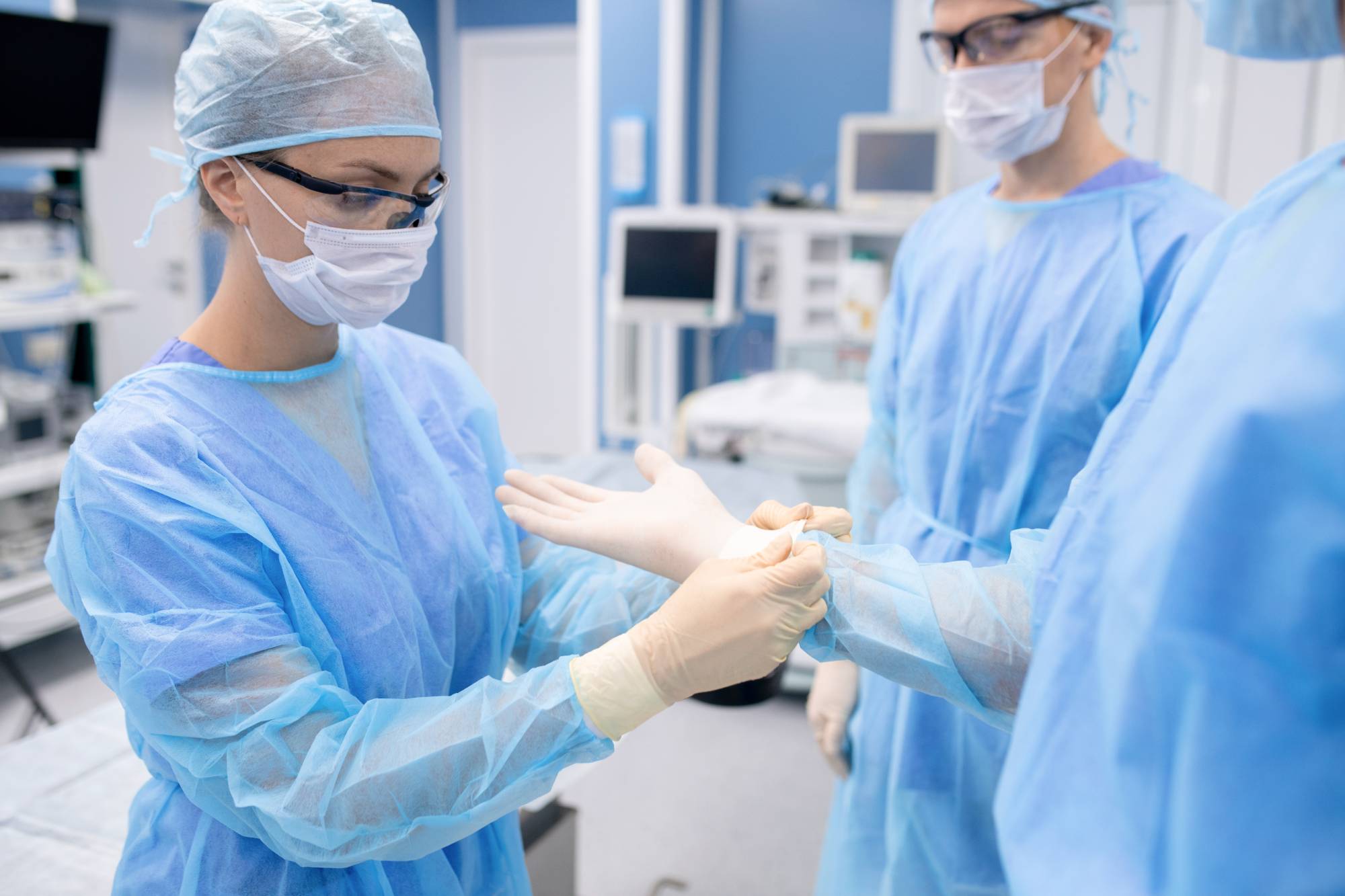COVID-19 is an infectious syndrome caused by the SARS-CoV-2 virus. The virus has spread quickly since it was first discovered on December 31, 2019. There have been more than 17 million confirmed cases of COVID-19, around 4.5 million of which are in the United States. Globally, there have been around 670,000 deaths from the virus, with around 151,000 of those deaths occurring in the United States [1]. For anesthesiologists, who are often in close contact with patients during surgery, certain protective measures addressing perioperative concerns regarding COVID-19 can reduce the risk of disease transmission.
Hospitals have responded proactively by instituting a variety of protective measures, including creating isolation units for patients with symptoms of COVID-19, providing medical staff with protective gear, and instituting regular temperature checks and testing of staff and patients. The American Society of Anesthesiologists recommends that all patients should be screened for symptoms before being admitted. Those that exhibit symptoms should be redirected to additional screening. When possible, those without symptoms should undergo nucleic acid amplification testing (commonly known as PCR testing) prior to surgery [2].
Patients with COVID-19 can initially present as asymptomatic or show mild symptoms, only to see their condition rapidly decline. In an early study from Wuhan, China by Wang, et al., some patients presented with minimal respiratory symptoms. One patient, who presented abdominal symptoms, was admitted to surgery and infected 10 healthcare workers [3]. A study by Huang, et al. found that all 49 patients in the sample developed signs of pneumonia, while 29% developed acute respiratory distress syndrome [4]. Common radiographic findings for patients with COVID-19 include ground glass opacities, which present alongside cord-like opacities. As the disease progresses, “reverse halo” or “crazy-paving” patterns often appear [5].
Anesthesiologists regularly execute aerosol-generating procedures such as intubation, suctioning and cardiopulmonary resuscitation. In addition to the baseline contact and preventative measures, the World Health Organization recommends that medical professionals engaged in these procedures also take droplet and airborne precautions [6]. Managing aerosol dispersal through liberal use of suction devices and thorough cleaning procedures have also been found to limit perioperative transmission of COVID-19 between patients and medical staff [7]. If patients are suspected of having COVID-19, Al Balas et al. suggest performing operations in a negative pressure environment and to limit the number of medical staff involved in the procedure [8].
Vascular care should also be reconfigured to avoid contamination and prevent infection. Dexter et al. suggest the creation of a closed lumen IV system. Open lumens, which may increase risk of viral transmission, should be outfitted with needleless devices that can be disinfected. Syringes should be kept outside of the contaminated environment. Ports should be thoroughly cleaned prior to injection and covered with disinfecting caps during and after the procedure [9].
Certain subpopulations, many of whom are likely to undergo procedures that require anesthesia, are at higher risk for contracting COVID-19. In particular, patients with cancer and transplant recipients appear to be at higher risk. A study by Liang, et al. analyzed 2,007 cases of COVID-19 from across China. The authors found that patients with cancer were 31% more likely to experience severe events that required admission into the ICU and invasive ventilation [10]. Michaels et al. noted that while there have been no known cases of COVID-19 in transplant patients, previous coronaviruses like SARS and MERS have had fatal consequences for transplant recipients [11].
Though there are many factors involved, carefully investigating and protecting against perioperative concerns regarding COVID-19 will benefit both patients and providers.
References
[1] “COVID-19 Map.” Johns Hopkins Coronavirus Resource Center, Johns Hopkins University, 2020, coronavirus.jhu.edu/map.html.
[2] “The ASA and APSF Joint Statement on Perioperative Testing for the COVID-19 Virus.” The ASA and APSF Joint Statement on Perioperative Testing for the COVID-19 Virus | American Society of Anesthesiologists (ASA), American Society of Anesthesiologists, 1 June 2020, www.asahq.org/about-asa/newsroom/news-releases/2020/06/asa-and-apsf-joint-statement-on-perioperative-testing-for-the-covid-19-virus.
[3] Wang, Dawei, et al. “Clinical Characteristics of 138 Hospitalized Patients With 2019 Novel Coronavirus–Infected Pneumonia in Wuhan, China.” JAMA, vol. 323, no. 11, 2020, p. 1061., doi:10.1001/jama.2020.1585.
[4] Huang, Chaolin, et al. “Clinical Features of Patients Infected with 2019 Novel Coronavirus in Wuhan, China.” The Lancet, 2020, www.thelancet.com/pdfs/journals/lancet/PIIS0140-6736(20)30183-5.pdf.
[5] Greenland, John R., et al. “COVID-19 Infection: Implications for Perioperative and Critical Care Physicians.” Anesthesiology, vol. 132, no. 6, June 2020, pp. 1346–1361., doi:10.1097/aln.0000000000003303.
[6] Clinical Management of COVID-19. World Health Organization, 2020.
[7] Zheng, Min Hua, et al. “Minimally Invasive Surgery and the Novel Coronavirus Outbreak: Lessons Learned in China and Italy.” Annals of Surgery, vol. 272, no. 1, 2020, doi:10.1097/sla.0000000000003924.
[8] Al-Balas, Mahmoud, et al. “Surgery during the COVID-19 Pandemic: A Comprehensive Overview and Perioperative Care.” The American Journal of Surgery, vol. 219, no. 6, 2020, pp. 903–906., doi:10.1016/j.amjsurg.2020.04.018.
[9] Dexter, Franklin, et al. “Perioperative COVID-19 Defense: An Evidence-Based Approach for Optimization of Infection Control and Operating Room Management.” Anesthesia & Analgesia, vol. 131, no. 1, 2020, pp. 37–42., doi:10.1213/ane.0000000000004829.
[10] Liang, Wenhua, et al. “Cancer Patients in SARS-CoV-2 Infection: a Nationwide Analysis in China.” The Lancet, vol. 21, 14 Feb. 2020, pp. 335–336.
[11] Michaels, Marian G., et al. “Coronavirus Disease 2019: Implications of Emerging Infections for Transplantation.” American Journal of Transplantation, vol. 20, no. 7, 2020, pp. 1768–1772., doi:10.1111/ajt.15832.

